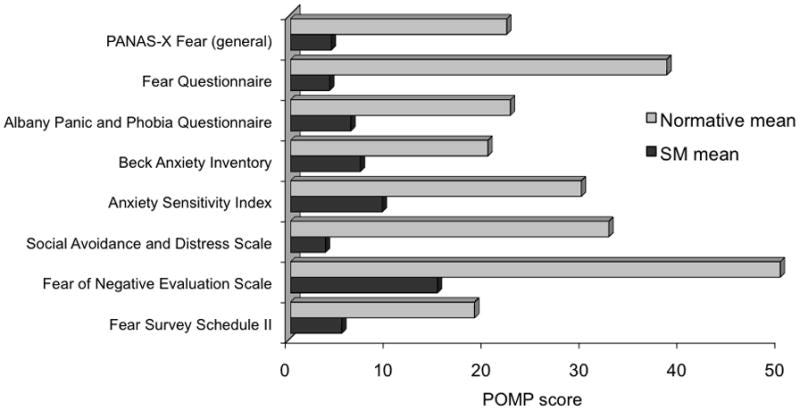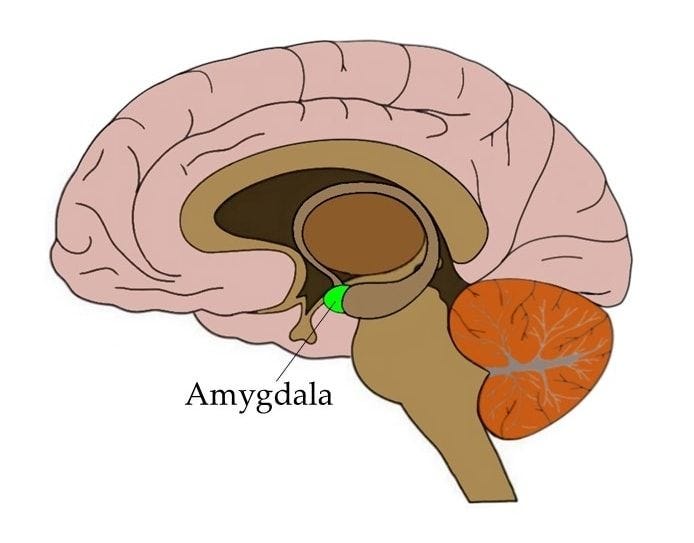Patient SM - No Fear?
What if the brain absolutely could not experience fear? Is that possible and how?
Hello hello helloo!
Welcome back to my Newsletter! This week’s pick for a case study is Patient SM. Lets dig straight into it.
Outline
Patient SM (name disclosed as part of the confidentiality clause) had focal bilateral amygdala lesions due to a disease called Urbach-Wiethe Syndrome. I shall break this down, do not get overwhelmed.
As we have quite commonly done, lets break down the name focal bilateral amygdala lesions. Focal simply means focusing on a very specific location, bilateral means that it affects the part on both the hemispheres and lastly lesions mean damages.
Let me quickly go back to the term bilateral. Since we know that the brain is divided into two hemispheres, the left and the right, it is also important to note that both those hemispheres will have corresponding parts.
For example, the frontal lobe will have both left and right (for the two hemispheres) and so on.
Hence, the term bilateral amygdala means, both, left and right part of the amygdala.
The term altogether simply means damage to the amygdala.
Urbach-Wiethe Syndrome
Urbach–Wiethe disease is characterized by both neurological and dermatological symptoms. The neurological aspects involved bilateral symmetrical calcifications on the medial temporal lobes (damages on the middle of the temporal lobe, which is where the amygdala resides).
As of right now, we shall not get into the dermatological symptoms of this syndrome since it isn’t related to our case.
In SM’s case, this is what had happened. She was exposed to snakes and spiders, sent on a tour to a haunted house and shown emotionally evocative films. Nothing seemed to induce any form of fearful response in her.
They had also given her self-report questionnaires over the span of three months to log her real-life experiences as well as (what Curr Biol describes) “a life history replete with traumatic events”. She showed absolutely no manifestations or expressions of fear or any other emotion relating to it.
Despite her lack of fear, SM is able to exhibit other basic emotions and experience the respective feelings.
Snakes/Spiders Exposure
When SM was exposed to a snake, she held it for over 3 minutes and showed curious and exploratory behaviour. “She rubbed its leathery scales, touched its flicking tongue, and closely watched its movements as it slithered through her hands”. She expressed how excited and curious she was by asking questions about the snake and expressing “This is so cool!”.
At this point, when asked to rate her fearfulness on a scale from 0 (no fear at all) to 10 (extreme fear), her responses never surpassed 2. If anything, she wanted to touch bigger and more scary looking animals in the store.
She was going to touch a Tarantula but the investigators had to stop her due to the high chance of getting bitten.
Haunted House
She was sent into the haunted house with a group of 5 other women. Upon going inside the haunted house, SM showed absolutely no hesitation as she walked through the passages and led the group through the haunted house.
In contrast, their scare tactics typically elicited loud screams of fright from the other members of the group. More than showing a lack of fear, SM exhibited an unusual inclination to approach and touch the monsters. Ironically, SM scared one of the monsters when she poked it in the head because she was “curious” as to what it would feel like.
Before, during, and after the haunted house, SM was queried about her current level of fear. She never reported experiencing any elevations in fear, her fear ratings being zero throughout.
She did, however, report feeling a high level of excitement and enthusiasm.
The following are the overall results of SM compared to the average in a healthy populations.
How is this possible?
Neuroscience Behind This?
As I briefly mentioned earlier, Urbach-Wieth damaged a part of the brain called the Amygdala. This mysterious little part of the brain is mostly responsible for emotions and memories linked to fear.
Amygdala
Amygdala is an almond-like shaped structure located in middle of the temporal lobe (one that is responsible for sensory information processing).
This plays a key role in emotional responses - in specific feelings of pleasure, fear, anxiety and anger. It attaches the emotional responses to memories. Which also means that it indirectly determines how strongly a memory is stored (aka would we remember it well or not). This is because memories that have a strong emotional response attached to it are more clear when it comes to remembering them.
It has been widely known to be involved in instigating fear when a negative stimuli is presented to us.
Scientists have been attempting to use the amygdala to develop anti-anxiety drugs.
This would explain why Patient SM was feeling no fear at all. The part of the brain that is responsible in inducing fear to keep us safe, was destroyed because of the Urbach-Wiethe Syndrome.
One of the key things to remember is that the damage to her amygdala not only disabled the fear inducing quality but also the “attention to fear-inducing stimuli”.
Note however, that the amygdala is mostly responsible for “instinctive” fear not conscious based fear. It is the most instinctive and raw part of the human brain, which is probably obvious since it is a part of the limbic system.
Things that a healthy human would fear, would make SM feel explorative and curious.
Counter-intuitively, this is not a blessing, this in fact is dangerous.
Fear is an evolutionary product to keep humans safe from dangers.
Thanks for reading!








